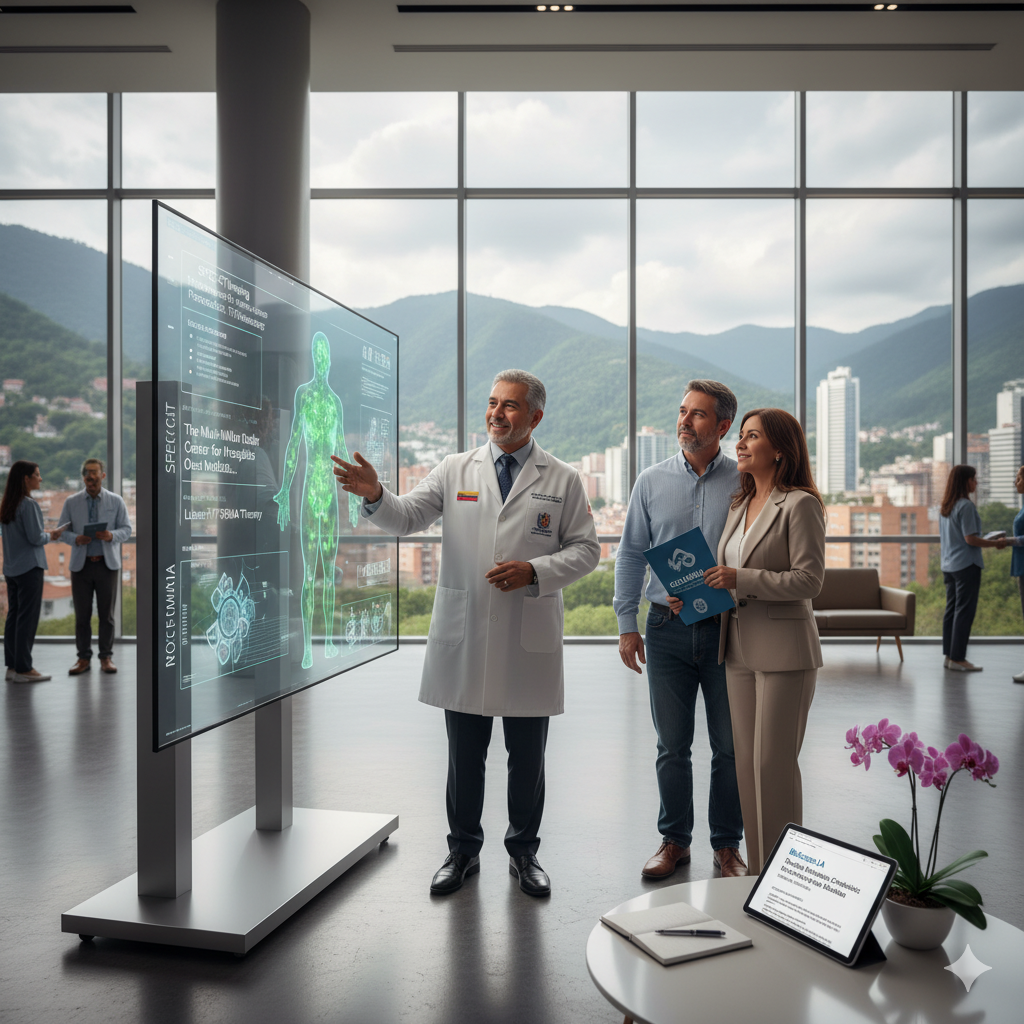


The convergence of prohibitive U.S. healthcare costs and the explosive demand for cutting-edge PSMA radioligand therapy has created an unprecedented $21.4 billion market opportunity for Latin American medical institutions by 2031. With the Latin America theranostics market growing at a remarkable 18.6% CAGR, hospitals in the region are uniquely positioned to capture this highly lucrative, super-tertiary care segment through strategic implementation of globally compliant theranostic programs.
This is not merely about attracting medical tourists—it is about establishing Latin America as the definitive global hub for next-generation, financially accessible oncology. The key lies in strategic investment in integrated PET/CT diagnostics coupled with Lu-177 PSMA therapy delivery, following the proven blueprint of sophisticated medical centers already succeeding in the region.
The primary engine driving U.S. patients to international destinations remains the stark cost disparity that has only intensified in recent years. Healthcare costs in Latin America continue to deliver 60-70% savings compared to U.S. and Canadian pricing, with this gap widening as American healthcare inflation outpaces regional cost increases.
For metastatic castration-resistant prostate cancer (mCRPC), this cost arbitrage becomes particularly compelling. Novel Lu-177 PSMA therapy costs in the U.S. have escalated to $27,000 per cycle (CAD pricing confirms this range), translating to $135,000-$162,000 for a complete six-cycle treatment regimen. Recent Canadian negotiations with Novartis underscore the pricing pressure, with public drug plans requiring extensive negotiations to achieve coverage for what provinces consider an essential life-saving treatment.
When faced with these astronomical costs, U.S. self-pay patients and those with high-deductible insurance plans represent a motivated patient population actively seeking internationally accredited, cost-effective alternatives. A strategically positioned Latin American program can price comprehensive PSMA therapy packages at 40-60% below U.S. costs while maintaining substantial margins and delivering world-class care.
The global Lu-177 market trajectory has exceeded initial projections, with current valuations reaching $2.11 billion in 2024 and accelerating toward $7.41 billion by 2034 at an 11.6% CAGR. This growth directly stems from expanding clinical applications, regulatory approvals, and the proven efficacy demonstrated in landmark trials like VISION and TheraP.
The Latin American theranostics sector specifically shows even more aggressive growth patterns, with market valuations of $30.77 billion in 2024 projected to reach $93.54 billion by 2033 at a 13.15% CAGR. This regional outperformance reflects several converging factors:
Recent clinical evidence and regulatory developments have reinforced the absolute requirement for PSMA PET/CT imaging in patient selection and staging. The FDA's expansion of Lu-177 PSMA therapy indications in March 2025 explicitly maintains the requirement for PSMA PET confirmation of target expression, making compliance with these imaging standards essential for any program seeking international credibility.
Post-hoc analyses of the VISION trial have provided quantitative evidence for PET/CT's predictive value. Patients with higher whole-body tumor SUV_mean values on baseline PSMA PET showed significantly better treatment responses, with SUV metrics serving as the single best predictor of progression-free and overall survival benefits. This quantitative capability—impossible with SPECT imaging—enables true personalized treatment planning and prognostication.
The screening failure rates in major trials underscore PET/CT's selection value:
Modern theranostic programs require integrated imaging capabilities that only PET/CT can provide:
Technical Specifications:
Capital Investment Analysis:
While PET/CT systems require $750,000-$2,000,000+ CAPEX compared to SPECT's $400,000-$600,000, this investment differential represents the entry fee for market participation rather than optional enhancement. Attempting to shortcut with SPECT-only approaches immediately disqualifies programs from attracting serious international referrals.
Contrary to common perceptions, Latin America possesses robust nuclear medicine capabilities that directly support advanced theranostic programs:
Regional Statistics (2024):
Latin American countries have implemented groundbreaking reforms that dramatically accelerate clinical implementation timelines:
Brazil's Transformation:
Regional Harmonization:
Regional isotope production capabilities are advancing rapidly:
Brazil's IPEN-CNEN has demonstrated capability to produce ready-to-use Lu-177-PSMA-617 doses maintaining >99% radiochemical purity after 48 hours, supporting distribution across distances up to 420km.
Bolivia's Cyclotron Complex in El Alto, operational since 2023, produces radiopharmaceuticals at 4,000+ meters elevation, demonstrating regional technical capabilities and commitment to nuclear medicine advancement.
Cuba-Bolivia Collaboration exemplifies regional knowledge sharing, with agreements to develop biotechnological components not manufactured elsewhere in Latin America, focusing specifically on theranostic applications.
Imaging Infrastructure Investment:
Regulatory Compliance:
Supply Chain Establishment:
Protocol Implementation:
Team Building:
Quality Assurance:
International Partnerships:
Clinical Research Integration:
Per-Patient Economics:
Volume Projections:
Total Revenue Impact:
Essential Infrastructure:
OPEX Considerations:
Clinical Excellence:
Operational Excellence:
Regulatory Compliance:
Supply Chain Resilience:
Clinical Risk Mitigation:
Reputational Protection:
The convergence of market forces—escalating U.S. healthcare costs, proven efficacy of Lu-177 PSMA therapy, and Latin America's enhanced regulatory and infrastructure capabilities—has created an unprecedented opportunity for forward-thinking healthcare institutions. However, success requires unwavering commitment to clinical excellence and substantial upfront investment.
Key Strategic Imperatives:
The institutions that embrace this strategic opportunity—investing appropriately in technology, talent, and systems—will establish themselves as regional leaders in advanced oncology care while generating substantial returns on investment. Those that attempt to minimize investment or compromise on quality standards will find themselves excluded from this transformational market opportunity.
The message is clear: commit fully to world-class theranostic capabilities or risk irrelevance in the rapidly evolving landscape of precision oncology. The multi-million dollar opportunity awaits those bold enough to seize it.